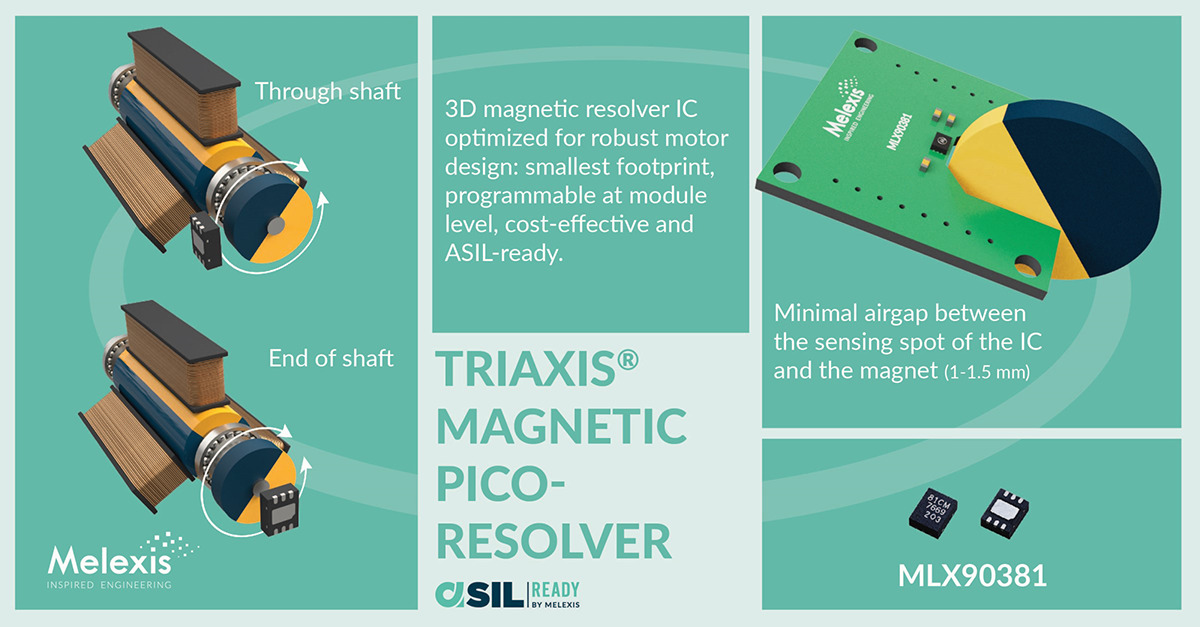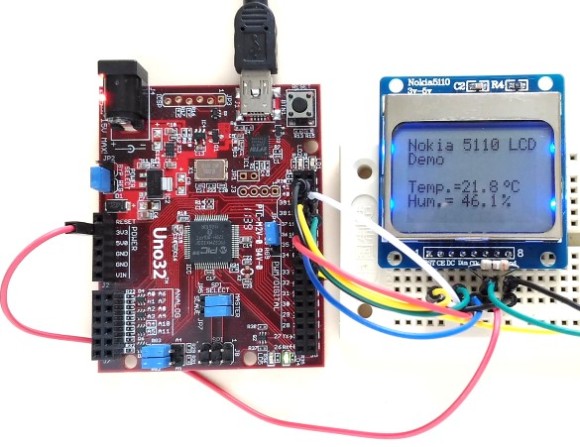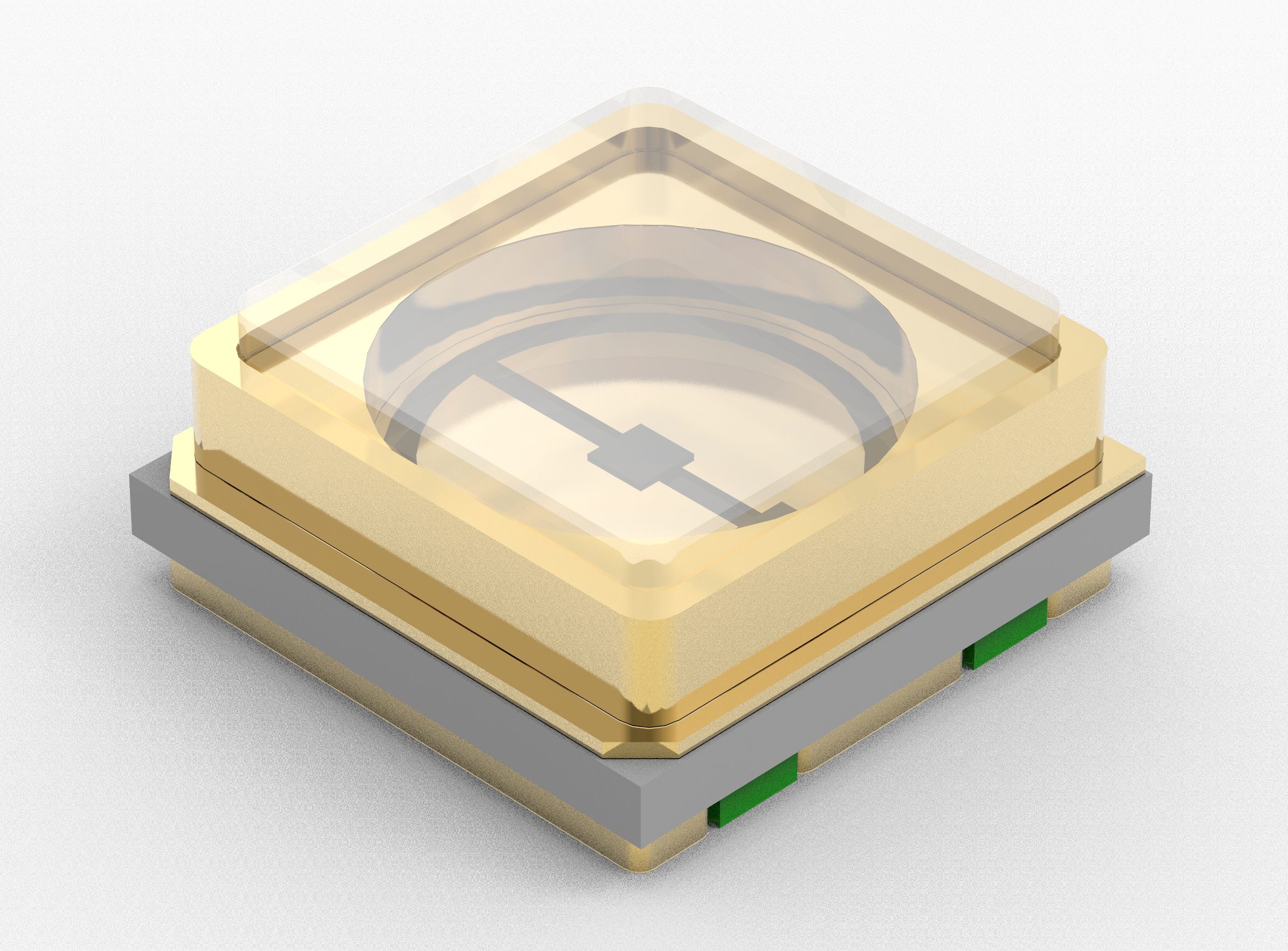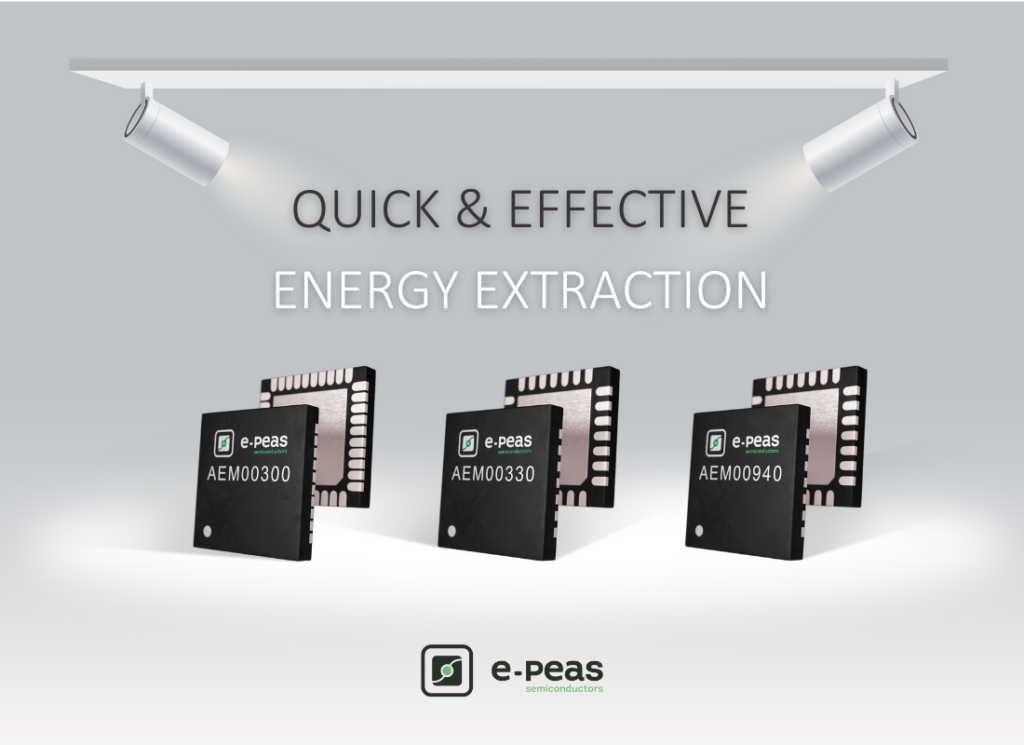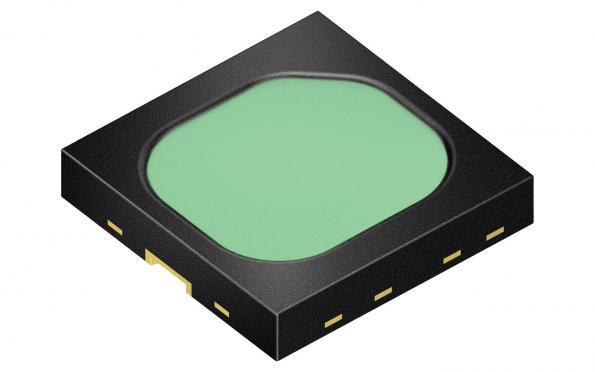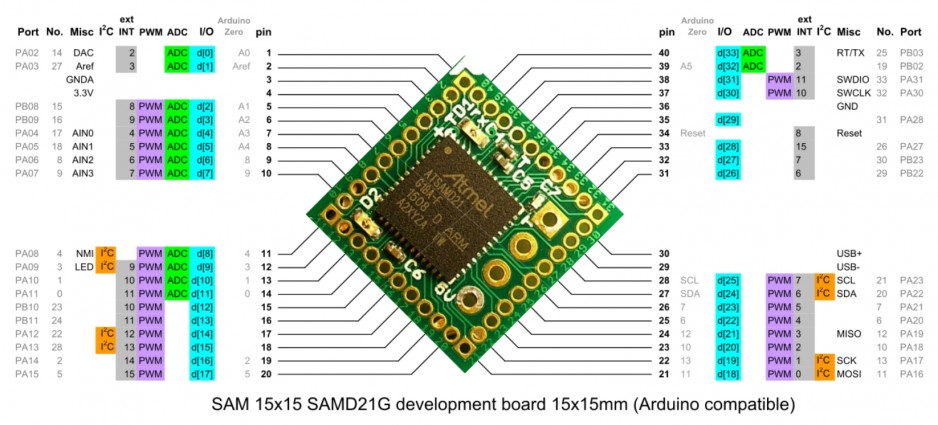
With extended I/O pins, the same powerful controller of the Arduino Zero, Atmel SAMD12G18 and in smaller size, Albert Van Dalen had developed “SAM 15×15“ development board.
SAM 15×15 is an Arduino compatible development board that features the Atmel SAMD12G18 microcontroller. It has 34 digital I/O pins, 24 pins of them support PWM, and 14 are analog inputs.
The SAMD12G18 is a low-power, high-performance Atmel SMART ARM Cortex-M0+ based flash microcontroller. It is ideal for a wide range of home automation, consumer, metering, and industrial applications. It features 256KB of flash and 32KB of SRAM, up to 48MHz operating frequency, 1.62V to 3.63V power supply, full speed USB device and embedded host, and six serial communication modules configurable as UART/USART, SPI or I2C.
The SAM 15×15 board is 28x28mm size and it has three embodiments combined into one PCB:
- 28 x 28m: This board fits on a standard breadboard; it has 40 pins with 2.54mm pitch.
- 22 x 22mm: This board is a smaller version of the 28 x 28mm board.
- 15 x 15mm: This board has 40 pins with 1.27mm pitch.
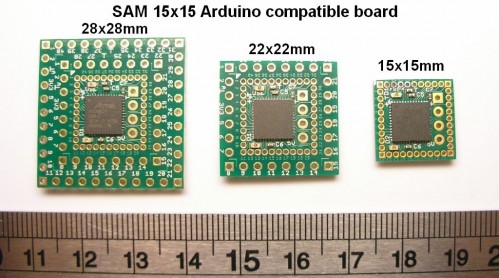
Only the default non-reduced dimensions (28 x 28mm) is available for ordering by contact with Albert directly, its price is €24.95 and the shipping is free for all countries worldwide. 4-pin USB pin header is included, and male USB 2.0 motherboard cable is optional for €2.00.
The price is expensive a bit because of the high manufacturing costs for the initial series of just 100 pieces. But you can get back your money when publishing your project with the SAM 15×15 on the internet as an article.
SAM 15×15 features
- Controller: Atmel ATSAMD21G18, 32-bit, 48MHz, ARM Cortex-M0+
- Digital I/O pins: 34
- PWM outputs: 24 (PWM DAC)
- Analog inputs (ADC): 14
- ADC resolution: 12-bit
- One 10-bit DAC
- Flash memory: 256 kbyte
- SRAM: 32 Kbyte
- EEPROM: 32 Kbyte (emulated in Flash)
- Preprogrammed Arduino Zero bootloader
- Programming and debugging through the integrated USB port

More details and information about the board is available here with examples and other useful tips and guides.
This video shows the 34 I/O pins and the 24 PWM pins in action





